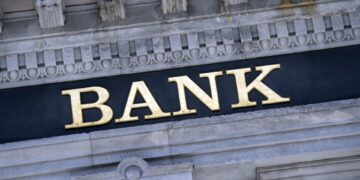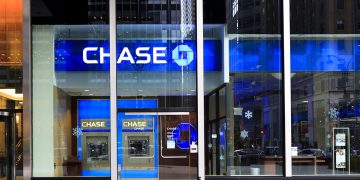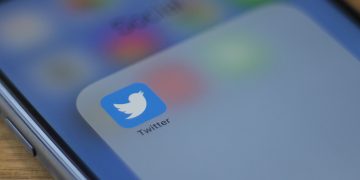For the second time in his career, entrepreneur Ken LaRoe decided to start a bank after being inspired by a book he read.
This time it was “Drawdown” by Paul Hawken, and the new bank LaRoe seeks to open, to be called Climate First Bank, would enact some of the environmental principles it lays out. LaRoe chose Finastra as his primary tech partner based on its commitment to climate change as well as its ease of use and overall customer experience.
The bank is expected to open in St. Petersburg, Fla., in May provided it receives the necessary federal and state approvals, according to LaRoe.
This will be the third bank launch for LaRoe, and the second with an environmental bent. In 2012, the banking company he was running at the time, First Green Bancorp in Orlando, was on American Banker’s list of America’s Greenest Banks. Seacoast Banking Corp. of Florida bought First Green in 2018.
LaRoe started First Green after reading “Let My People Go Surfing” by Yvon Chouinard, the founder and owner of Patagonia, an outdoor clothing company known for priortizing environmental responsibility.

The effort to form a values-based bank — LaRoe is pursuing a state bank charter, approval from the Federal Deposit Insurance Corp. and funding from investors — is well timed given the current interest among investors in supporting socially conscious companies. Also, LaRoe’s technology choices exemplify a growing trend among community banks, especially new ones, of shifting to the cloud.
In an interview, LaRoe shared how he plans to incorporate environmental principles at his new bank and how and why he chose the new company’s core system. The following transcript was edited for length and clarity.
What inspired you to start Climate First, and what will its values be beyond protecting the environment?
KEN LAROE: I was reading “Drawdown” by Paul Hawken, a thought leader on climate and environmental issues. He brought together all of the movers and shakers in the climate space: the climate scientists, academicians and economists, and they came up with a hundred good initiatives that can be done today that will actually reverse the climate crisis and draw down atmospheric CO2,. As I was reading the book, a lightbulb went off and I thought, what I need to do is go through the initiatives, figure out which ones a community bank can actually affect, and that will be the foundation for our products and business plan.
I identified 12 or 14 of these initiatives, such as renewable energy and rooftop solar, which we did really well at First Green Bank, and now I’ll have a platform to relaunch it. Our values also include women-owned businesses, regenerative agriculture and building retrofits, which could be everything from HVAC to lighting to windows.
We will embrace all of the environmental, social and governance standards, as we did at First Green. It was a huge learning curve because I got into it not knowing much about all of the constituents of ESG and really focused on environmental stuff.
For the bank’s physical footprint, are you going to retrofit existing buildings with solar roofing and other environmentally friendly features rather than build something new that would create a whole new carbon footprint?
I would like to, to the extent possible, wherever we can find a building. The building we have in St. Pete now is just a short-term lease of a house that was built in 1926. Going forward, we will be LEED certified to the highest level possible.
You mentioned that there was a learning curve at First Green. Do you see what you’re going to do at Climate First as a continuation of what you were doing there, or are there things that you really want to do differently this time?
Some of the things we were doing there I want to supercharge, like our solar loan program, and be able to do a lot more of them and do them profitably. I really want to tackle the climate-equity problem, the problem that climate change is disproportionately affecting low- to moderate-income communities.
I’m not an expert on community reinvestment or lending in low- to moderate-income communities. But one of our board members, Dominik Mjarten, is the CEO of Optus bank in Columbia, S.C., a minority depository institution and community development financial institution. So I’ve got his expertise, and we’re going to work together on products.
Since we last spoke nine years ago, the world has changed a lot. Green efforts were still fringe then, and now they’re really pretty high on the agenda in Washington, in ESG investing and in corporate America. Is that helping you, the fact that there’s so much more awareness and concern about climate change than there was 10 years ago?
It’s been unbelievable. Then it was really not mainstream or Main Street. When I filed the application back in 2008 and regulators did the pre-opening exam, the FDIC examiner said, this is a niche bank and we’re not crazy about niche banks. The response I’ve gotten from the regulators this time is, this is the coolest thing ever. And the community has rallied. We get so much communication from people saying, I’m going to bank with you the minute you open. I’ve got investors coming from everywhere, people I have never known, never met.
So as part of your values and your mission, are you going to try to only do business with people and companies that are climate-friendly?
Absolutely. We will not bank dirty energy-extractive industries, industrial agriculture, porn or for-profit prisons. We’ve got a pretty extensive list of exclusionary businesses and industries we will not bank. Now, if it’s the guy down the road who’s got a local auto repair shop and he has no pretenses of anything sustainable, that’s OK. We’ll try to influence and educate as we go. If a dentist comes in and she wants to build a new office building, we’ll be delighted to finance the construction, and we’re going to try to talk her into doing it by LEED standards and using solar energy. If she decides not to, we’ll still finance it.
You mentioned a solar loan. Is that a special kind of loan for buying solar panels and such?
Yes. There are a lot of fintech companies in that space, but they’re very expensive for the consumer. We’ll have an online application process and automated decisioning. And then I’d like to package them up and securitize them and sell them in the secondary market so we can do larger — much larger — volumes of them.
What made you choose Fusion Phoenix core banking software from Finastra?
We did four demos with four different cores. It was super important to me to have a good customer experience, whether they’re coming in the bank and open a checking account, or whether they’re banking on their phone or iPad. It’s critical that a customer would be able to open an account easily, just like you would if you went on Chase or Capital One to open an account online. I required all of the vendors to give me the names of two banks that use their system. And I told them I was going to go online and open an account at those banks and if there was any problem at all, I wasn’t going to use their system.
The other requirement was that I had to have a Zoom meeting with the CEO of the company. I wanted to be able to look the guy in the eyes and ask about ESG initiatives. Only Finastra set up a meeting with the CEO in London, who said he wanted his to be the core processor doing the most to reverse the climate crisis.
So it was more the commitment to the environment that you liked, rather than the technology itself.
Yes. The technology is exceptional, also. So it was kind of a win-win. I used the software at my first bank [Florida Choice Bank], and it was a phenomenal system. It was easy. It was intuitive. The customer experience was fantastic. It’s been around for more than 20 years, and they’ve refined it.
So you don’t see the software’s age as a drawback but as an advantage because it’s gotten better over time?
It’s Windows-based, and it uses the current version of Windows, and it runs on the Microsoft Azure cloud. The mobile component is exceptional. I needed a system that would let someone open an account from their phone just as quickly and easily as they could with Chase or Capital One. This was flawless and effortless. And that’s what we will have.








